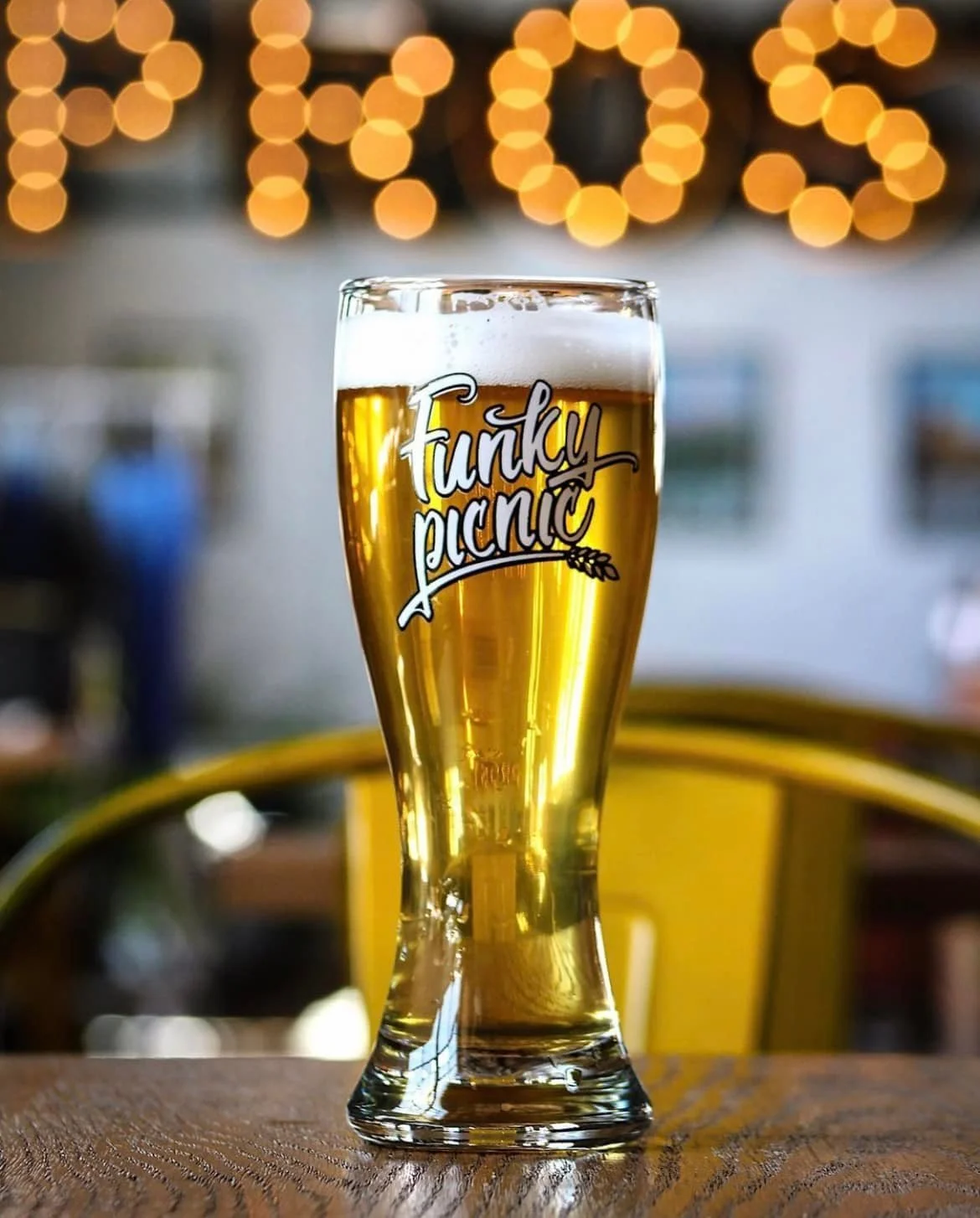Pilsner: The King of Lagers
With the recent re-release of our German-Style Pils, COASTERS!!!, we decided to dive a little deeper into one of our favorite styles of beer, the Pilsner. From one of our previous blog posts, you may have learned that the Czech Republic (now referred to as Czechia) gave us the world’s most popular style of beer, Pilsner. And it was the advances in transportation, glass-making, and refrigeration technology that spread it around the world.
Being geographically adjacent to the Czech Republic, the German brewers were quick to adapt the Czech-style Pilsner (sometimes called Bohemian Pilsner) to their own ingredients and brewing techniques. They shortened the style name to “Pils” as the original style literally means “from Pilzen” (where it was first brewed), to avoid any confusion on where the beer was made. Even in Czechia now, they only refer to the original Pilsner (Pilsner Urquell) as Pilsner, while everything else is considered Světlé Ležák, which means Pale Lager.
So what are some of the major differences between German Pils and Czech Pilsner? The biggest difference is the type of malt used in each. While both use a majority (if not all) of pale Pilsner malt, Czech Pilsner primarily uses floor malted grain. Floor malting is an old-world style of malting where cold-steeped barley kernels are laid out on floors to germinate for four to six days. During germination, the maltsters rake the malt to evenly distribute the temperature, as the process generates large amounts of heat and the temperature of the grain needs to be evenly distributed to generate a consistent product. After this process, the malt is then dried and left to mature for a few more weeks.
Floor Malting at Riverbend Malt House in Asheville, NC.
Because this technique takes place in a closed environment without artificial ventilation, it creates what is called “undermodified malt,” which means that not as many of the more complex starches in the germinating malt kernels are converted to more soluble starches. These more soluble starches are what are ultimately converted to sugar during the mashing process. The use of floor-malted grain will give a finished beer a rich and aromatic flavor, and leave the body of a finished beer with a fuller mouthfeel and a higher perceived sweetness, sometimes with an impression of light caramel. The German Pils uses highly modified malts to create a drier crisper beer that leads to a higher perceived bitterness compared to the Czech Pilsner. The malt character is more subtle than that of Czech Pilsner and contains notes of biscuit and cracker. German Pils will also be a little bit lighter in color as well. See the table below for more technical details from the BJCP Style Guidelines.
BJCP Style Guidelines for German Pils and Czech Pilsner.
Another major difference is the allowance of diacetyl (a slick buttery flavor created by yeast during the fermentation process that dissipates with lagering) in Czech Pilsner, so much so that a touch of diacetyl is actually acceptable in style guidelines. Typically, diacetyl is considered a fault in most beer styles (especially lagers), but a few styles consider it acceptable, including in some English Ales. Pilsner Urquell has so much diacetyl left in it from fermentation that it is often considered out of style by today’s standard, even though it was the original Pilsner and a hallmark of the style. Czech Pilsner is also very well known for its use of naturally softer water creating a rounder hop profile, where the German Pils uses harder water, creating a sharper and crisper bitterness on the finish. German Pils is also a bit more carbonated.
Almost all other aspects of these two substyles are nearly identical: clean fermenting lager yeasts, the floral, spicy, and earthy tones of Noble variety hops (especially Czech or German grown Saaz), and extremely refreshing! There is even an emerging Pilsner category known as the “American-Style Pilsner” that allows for up to 25% of the grain bill to be corn or rice, similar to American Adjunct Lagers.
So the next time you’re drinking on a nice clean and crispy Pilsner, see if you can tell if the beer in your hand is more of the German or the Czech variety. Prost!
Author: Collin Zreet
Collin is a native Texan and is a founding member and co-owner of Funky Picnic Brewery and Café. He is a Certified Cicerone and Certified BJCP Beer Judge, specializing in beer and food pairings. When he is not thinking about beer, he enjoys spending time with his wife, Taylor, son, Alder, and dog, Rocco.




